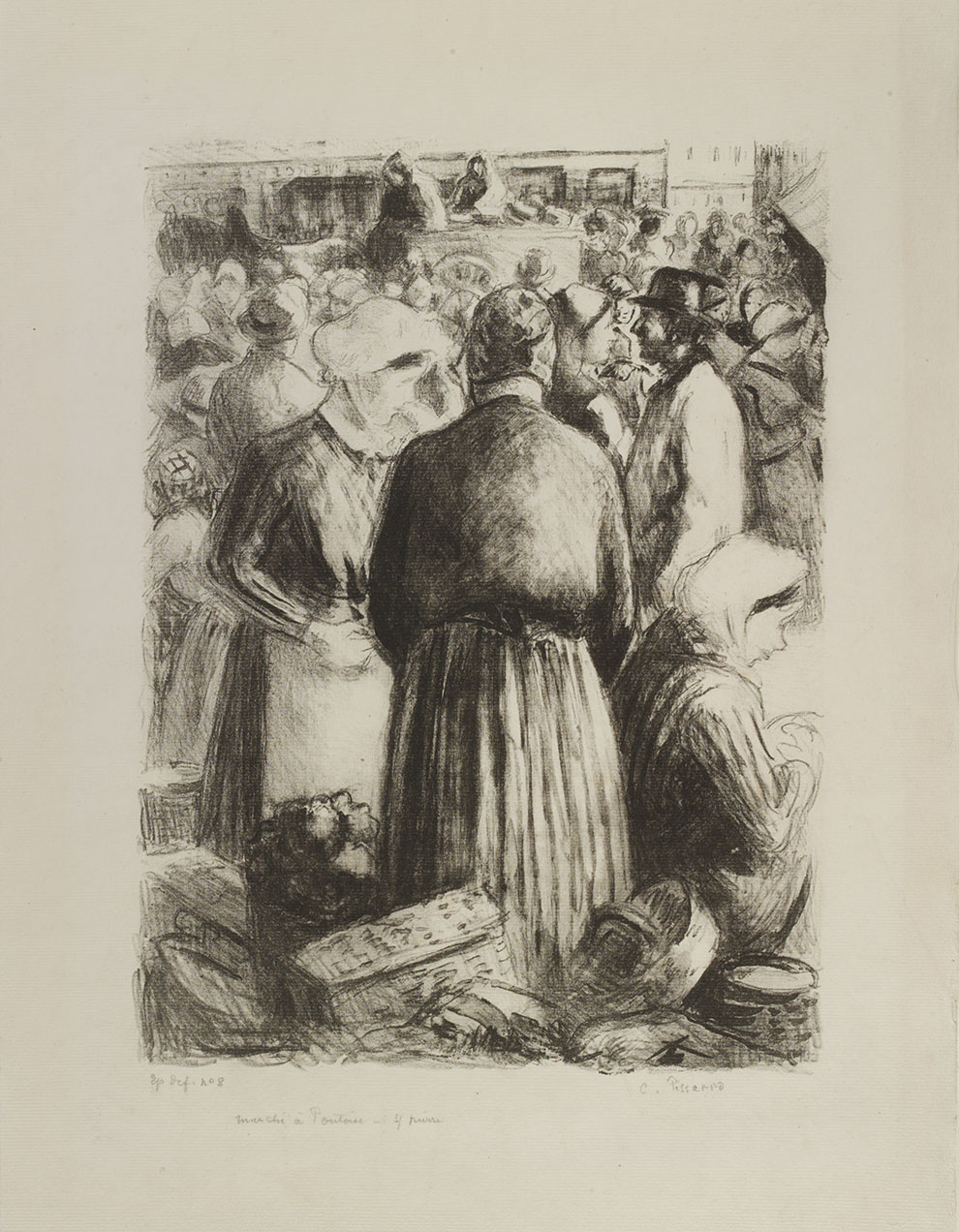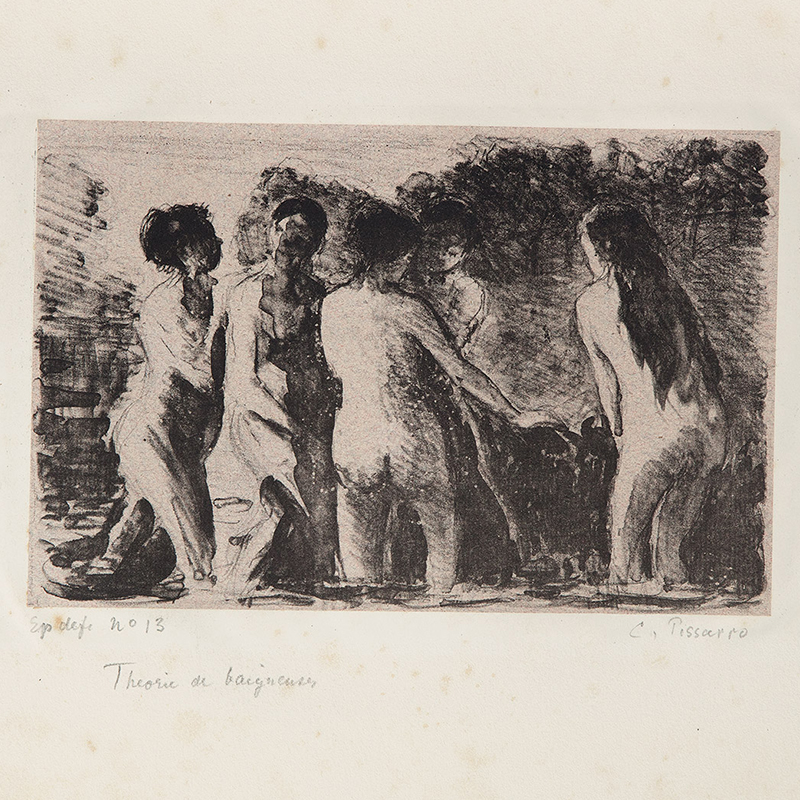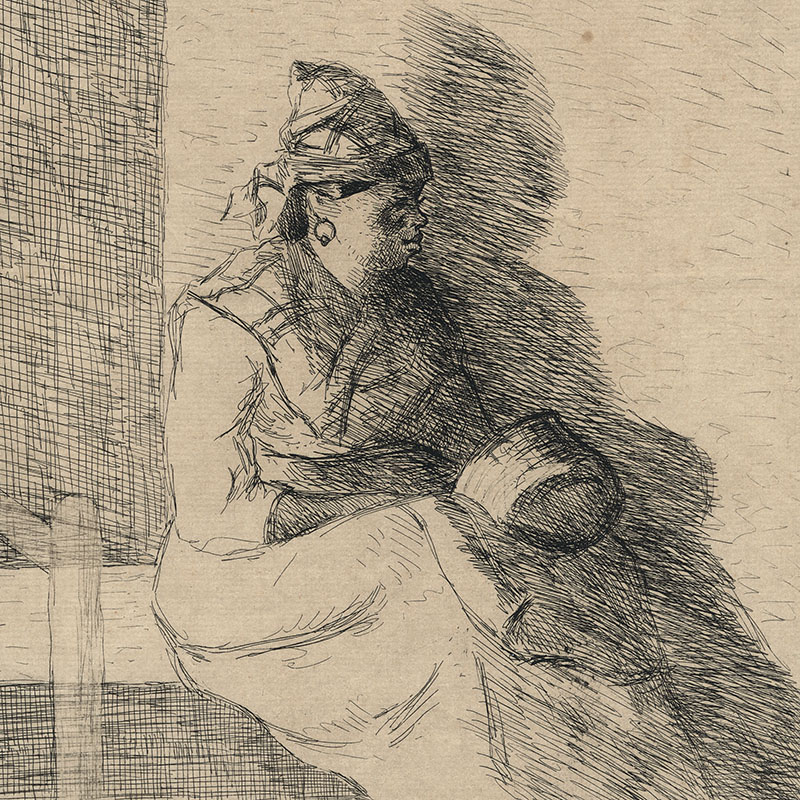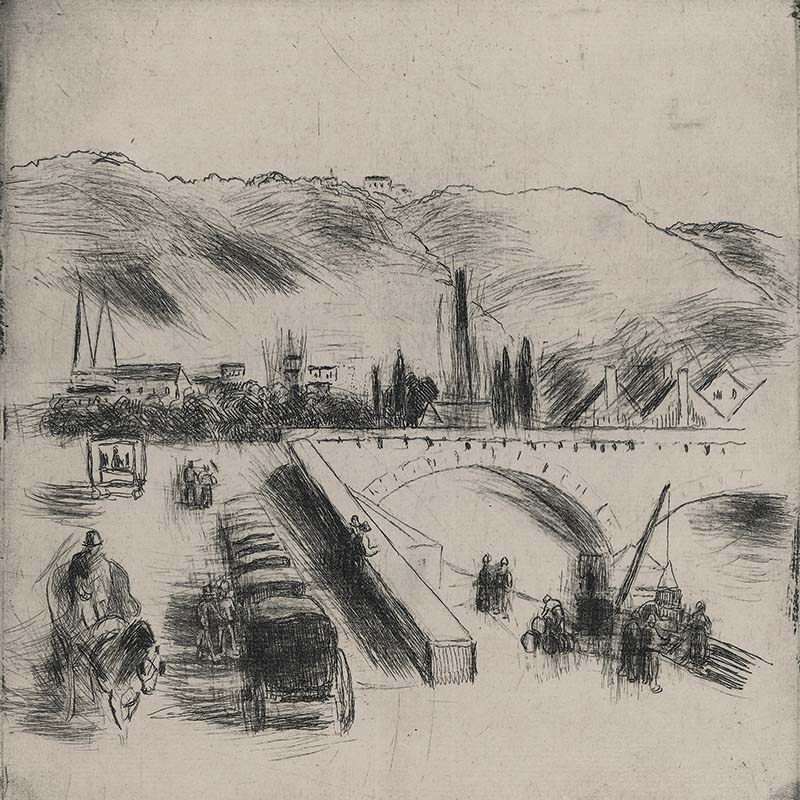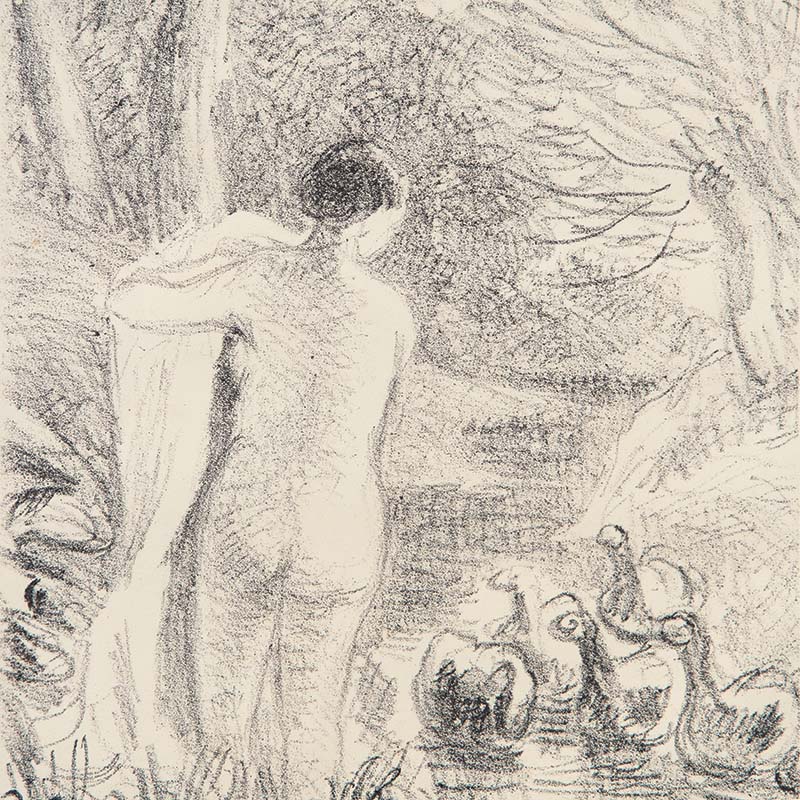Camille Pissarro
Saint Thomas 1830 - Paris 1903
1895 c.
308 x 227 mm; sheet 450 x 315 mm
Delteil p. 316, n. 147, III/III
C.P. monogram in the lower left, signed by the artist, in pencil in the lower right
A superb impression of this subject that is considered one of the artist’s print masterpieces. In fine condition, with full uncut margins all around. Annotated in pencil by the artist.
Plate no. 8 of the eighteen annotated by Pissarro, ‘P. dèf.’ and numbered (from 3 to 20).
Pissarro’s interest in the theme of the Pontoise Market began in 1881, when he discovered that it was the ideal subject for his studies, and represented it by means of various artistic techniques.
The artist moved to Eragny in 1884, where he set up his studio and where he bought a printing press in 1891. The press allowed him to personally create working proofs and editions directly from his plates.
The master’s greatest lithographic work is the sheet Marché à Pontoise, c. 1895, where the perfection of the gradations in tonal values is unsurpassed in the artist’s other lithographic works.
Information on the master
Camille Pissarro was one of the core members of the French Impressionism movement. In almost 50 years of Impressionist landscape painting, he sought to record the pure effects of colour and tone in nature. However, in contrast to Monet's uncompromising focus on capturing the ephemeral appearance of light, Pissarro never forgot the importance of composition and structural elements in his painting. Influenced initially by members of the Barbizon School of landscape painting such as Camille Corot, Charles-Francois Daubigny, Jean-Francois Millet as well as Gustave Courbet, he borrowed widely from his contemporaries. Committed to plein-air painting, he ranks with Claude Monet and Alfred Sisley as one of the best landscape artists of the late 19th century. In addition to pure Impressionism, he explored a number of differing styles, including Realism as well as Neo-Impressionism, and painted a wide variety of subjects across most of the painting genres, including landscapes, cityscapes, portraits, still lifes and peasant scenes. Despite lifelong poverty, he was noted for his encouragement of younger Post-Impressionist painters like Gauguin and Van Gogh.
Unlike the other Impressionists, Pissarro devoted his entire life to engraving. Where Degas engraved 65 plates, Renoir two score, Cézanne only three, Guillaumin and Sisley but a few more, Pissarro did at least one hundred and ninety etched and lithographed plates, without counting numerous monotypes. The artist engraved to please himself, indifferent to the possible commercial value of this side of his art. His prints are painter's etchings done for the artist's own satisfaction, generally printed by himself on odd bits of old paper. The number of these artist's impressions is often less than twenty.
Other works of the master
